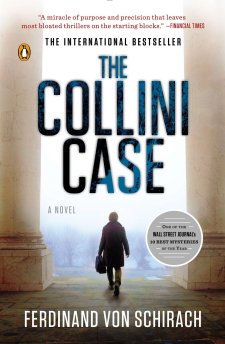Stuart Neville, Ratlines (New York and London: Soho Press, 2013). A tense thriller, which examines a dark and fascinating corner of 1960s Irish history 4 stars
- Opening line: “You don’t look like a Jew,” Helmut Krauss said to the man reflected in the window pane.
Stuart Neville should receive a little prize for featuring in both my last review of 2012 and my first of 2013. My reading plan originally looked somewhat different, but in the end I couldn’t resist picking up Ratlines, as there was so much buzz about it online.
Neville is one of those authors who wades into controversial waters on a regular basis. His first novel, The Twelve, explored the legacy of The Troubles from the perspective of a former paramilitary hitman, while his fourth, Ratlines, highlights Ireland’s inglorious role in offering asylum to over a hundred former National Socialists and collaborators following the Second World War, including senior SS-member Otto Skorzeny and Breton nationalist leader Célestin Lainé. With supreme irony, the novel shows Justice Minister Charles Haughey hobnobbing with Skorzeny, who helps other former Nazis evade justice via ‘ratlines’ – routes of escape to safe territory – at around the same historical moment that war criminals such as Eichmann are on trial (Israel, 1961) and West Germany is confronting the Nazi past via the Auschwitz trials (Frankfurt, 1963-65).
When Neville kindly talked to me about the novel at the Harrogate Crime Writing festival, he explained that he was prompted to write on the subject by Cathal O’Shannon’s 2007 documentary Ireland’s Nazis, and elaborated as follows: ‘The more I dug into it, the more fascinating it became – the machinations of how those people got there, and why they were allowed to be there; and then the conflicts within the government itself, because the Department of Justice was notoriously anti-Semitic, but the Department of External Affairs was a lot more liberal, and there was a constant battle between these two parts of government about whether these people should be in Ireland or not’.
I loved the initial scenario presented in the novel. Former Nazis living in Ireland are being bumped off, and the government wants to stop the killings in order to avoid a scandal ahead of President Kennedy’s state visit in 1963. Lieutenant Albert Ryan, a member of the elite G2 (Directorate of Intelligence), is charged with tracking down the killer, but feels conflicted, as he fought with the British against the Nazis during the war, and is uneasy about the support he sees being given to his former enemies by the state. Ryan’s position allows Neville to outline a complex set of historical, political and moral dynamics: Ireland’s decision to remain neutral during the war (dubbed ‘The Emergency’); the postwar suspicion of the Irish who opted to fight ‘for’ the hated British colonisers; and the ways in which nationalism created a bridge between the Nazis and groups such as the IRA. I knew very little about these aspects of Irish history before reading the novel, and thoroughly appreciated the way in which they were illuminated – with an admirably light touch – in the first half of the narrative.
I was slightly less enamoured by the way the plot played out in the second half. To be fair, I think this has more to do with my own reading experiences than the book. ‘Nazi-themed’ crime novels are a key focus of my research as an academic, and I’ve read over 150 of them in the last five years (yes, really – see this list). There’s therefore very little that an author writing on this subject-matter could do to surprise me in terms of plot twists. Rest assured that there are plenty to be had as the novel develops … as well as some eye-watering violence in line with Neville’s earlier Belfast noir.
You can hear Stuart Neville chatting to Mark Lawson about Ratlines on Radio 4’s Front Row from 3rd January 2013.
There’s another, little-known crime novel by John Kelly, written in the 1968 but only published in 1993, which also touches on the subject of collaborators hiding in Ireland – The Polling of the Dead (Moytura Press). Kelly was a lawyer and politician, which may account for the posthmumous publication of the novel, and he casts a cool satirical eye over the post-war political landscape of late 1960s Dublin.

Probably the most famous novel about the postwar ‘ratlines’ is Frederick Forsyth’s 1972 The ODESSA File, which was adapted for film in 1974 with John Voight and Maximilian Schell in the leading roles. Along with Ira Levin’s The Boys from Brazil (1976), this hugely successful crime novel/thriller used its narrative to communicate extensive historical information about National Socialism and the Holocaust to a mass readership.
With thanks to Soho Press for providing me with a review copy of the novel.
Mrs. Peabody awards Ratlines a taut and intriguing 4 stars.















